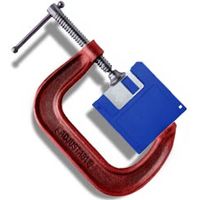Your personal computer can be a wonderful tool. However, if you've never tried organizing folders in any meaningful way, your computer can quickly become cluttered and unruly. Keeping the files on your computer in order will allow you to gain access to them more quickly.
If you have had your computer for a while, odds are you have accumulated multiple files, photos and e-mails that you simply no longer need. Having a bunch of unused files on your computer can eventually lead to a slowdown of your operating system and may make finding what you really need a chore.
Advertisement
When building a file organization system on your computer, you can choose to follow whatever system works best for you. Whether you choose to organize files by date, description or a combination of both, there should be a way that makes sense to you and accomplishes your ultimate goal of cleaning up your desktop.
So where do you begin? First, you need to take stock of what you have and determine its importance. Second, you have to choose a preferred digital filing system. Finally, it's time to roll up your sleeves and begin organizing files. Let's take a look at what each of those steps could look like.
Advertisement


